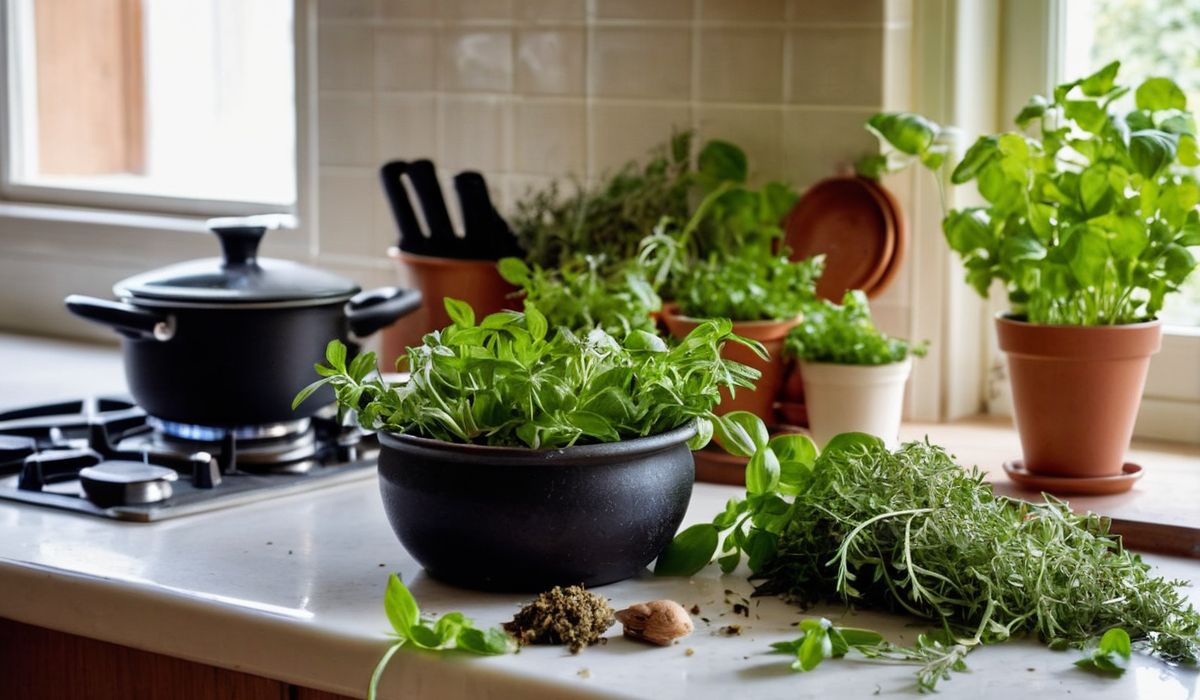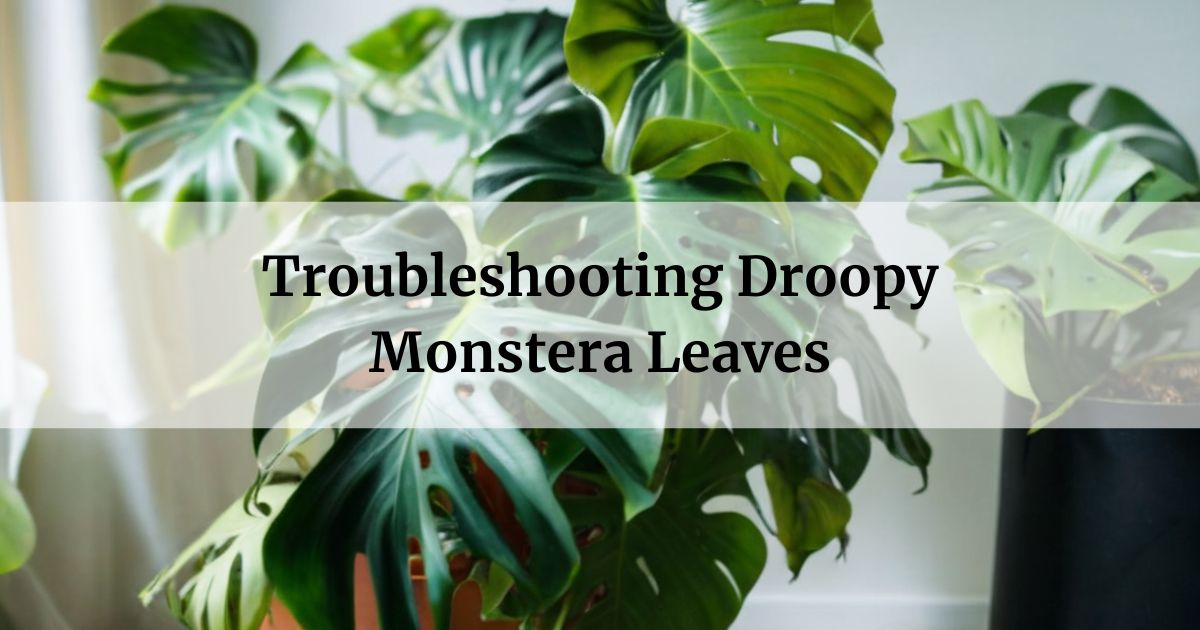
If you’re a proud owner of a Monstera plant, you may have noticed that some of its leaves become a little droopy sometimes. This can be concerning, especially if you haven’t made any changes to its watering schedule or lighting conditions.
Contents
Understanding Droopy Monstera Leaves
First and foremost, it’s important to note that some droopiness in Monstera leaves is actually normal, especially for non-supported plants. Monstera plants are known for their large, glossy leaves that naturally tend to droop as they grow. However, it’s crucial to distinguish between normal droopiness and signs of distress.
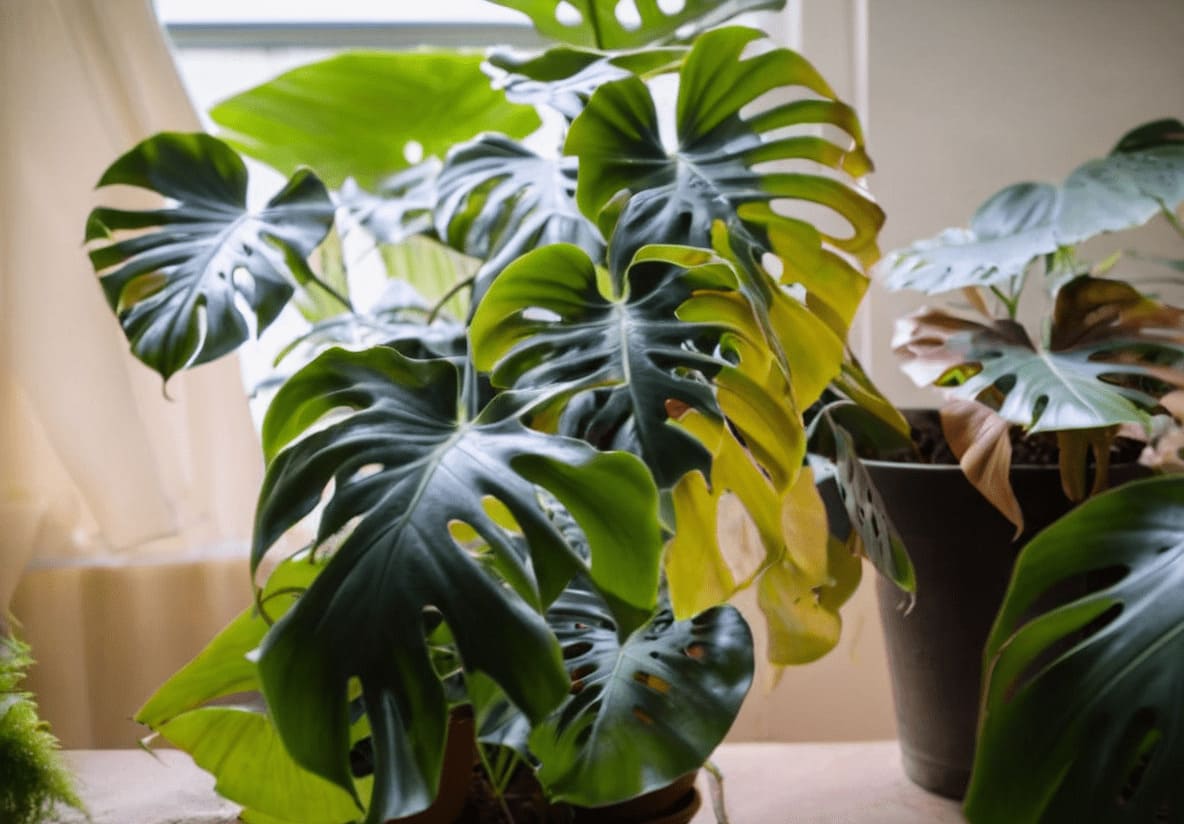

If the droopiness is accompanied by yellowing of the leaves, it may indicate an underlying issue that requires attention. Yellowing leaves can be a sign of overwatering, underwatering, nutrient deficiencies, or even pests. In such cases, it’s essential to assess the overall health of your Monstera plant and take appropriate action.
Trouble-shooting causes for droopy leaves:
- Underwatering: One of the most common reasons for droopy Monstera leaves is underwatering. Monsteras are tropical plants that thrive in consistently moist soil. If the soil dries out too much between waterings, the leaves will start to droop and wilt. Make sure to water your Monstera when the top inch or two of soil becomes dry.
- Overwatering: On the flip side, overwatering can also cause droopy Monstera leaves. When the roots sit in too much moisture, they can become waterlogged and start to rot. This prevents the plant from absorbing water and nutrients properly. Allow the soil to partially dry out between waterings to prevent overwatering.
- Low Humidity: Monsteras prefer high humidity levels, around 60-80%. If the air is too dry, the leaves may start to droop and curl. Try misting your Monstera regularly or using a pebble tray to increase humidity around the plant.
- Temperature Stress: Extreme temperature fluctuations, either too hot or too cold, can also lead to droopy Monstera leaves. Aim to keep your plant in a spot with stable, moderate temperatures between 65-85°F.
- Nutrient Deficiency: If your Monstera isn’t getting enough nutrients, the leaves may start to droop and discolor. Feed your plant a balanced liquid fertilizer every 2-3 weeks during the growing season to ensure it’s getting the nutrients it needs.
RELATED: Monstera Care Guide (with photos)
Providing Support for Your Monstera
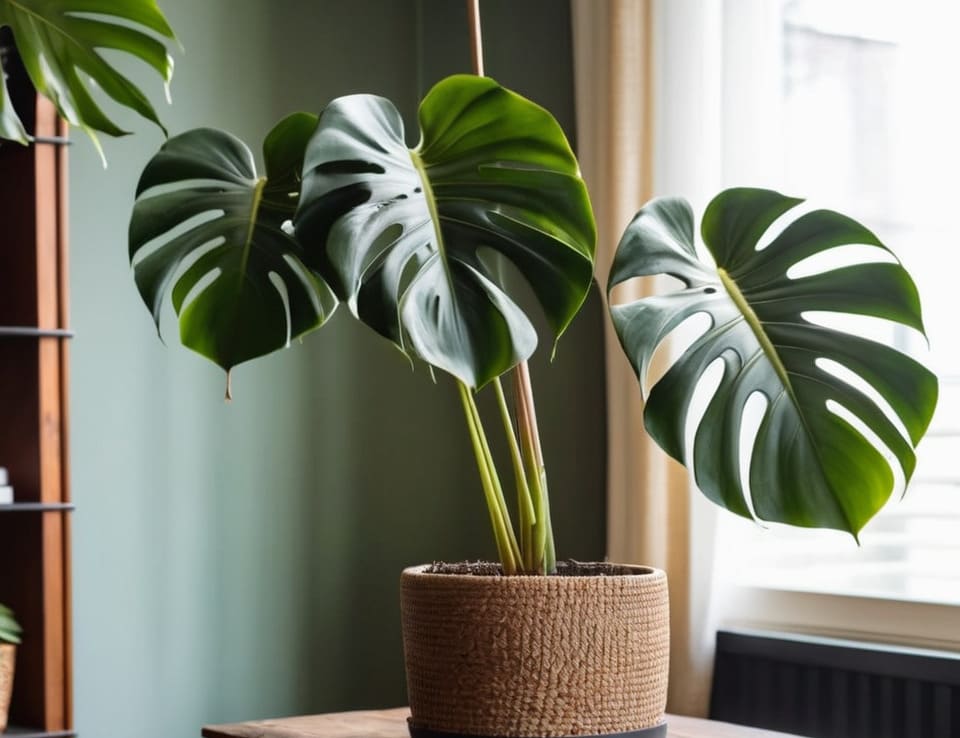

If you feel that your Monstera could benefit from some support, there are several options available to you. Providing support not only helps maintain the plant’s upright growth but also enhances its overall appearance.
Here are a few support options you can consider:
- Moss Pole: A moss pole is a popular choice for supporting Monstera plants. It mimics the natural climbing conditions of the plant and encourages aerial root growth. Simply place the moss pole in the pot and guide the stems towards it. Use soft planter’s tape to gently tie the stems to the pole, ensuring not to tie the petioles or leaves.
- Wooden Plank: Another option is to use a wooden plank as a support structure. This method works well for Monstera plants that have a more bushy growth habit rather than climbing tendencies. Place the plank behind the plant and secure it in place. You can use soft ties or plant clips to attach the stems to the plank, providing the necessary support.
Remember to regularly check the ties or attachments to ensure they are not too tight, as this can restrict the plant’s growth and cause damage.
Caring for Your Monstera
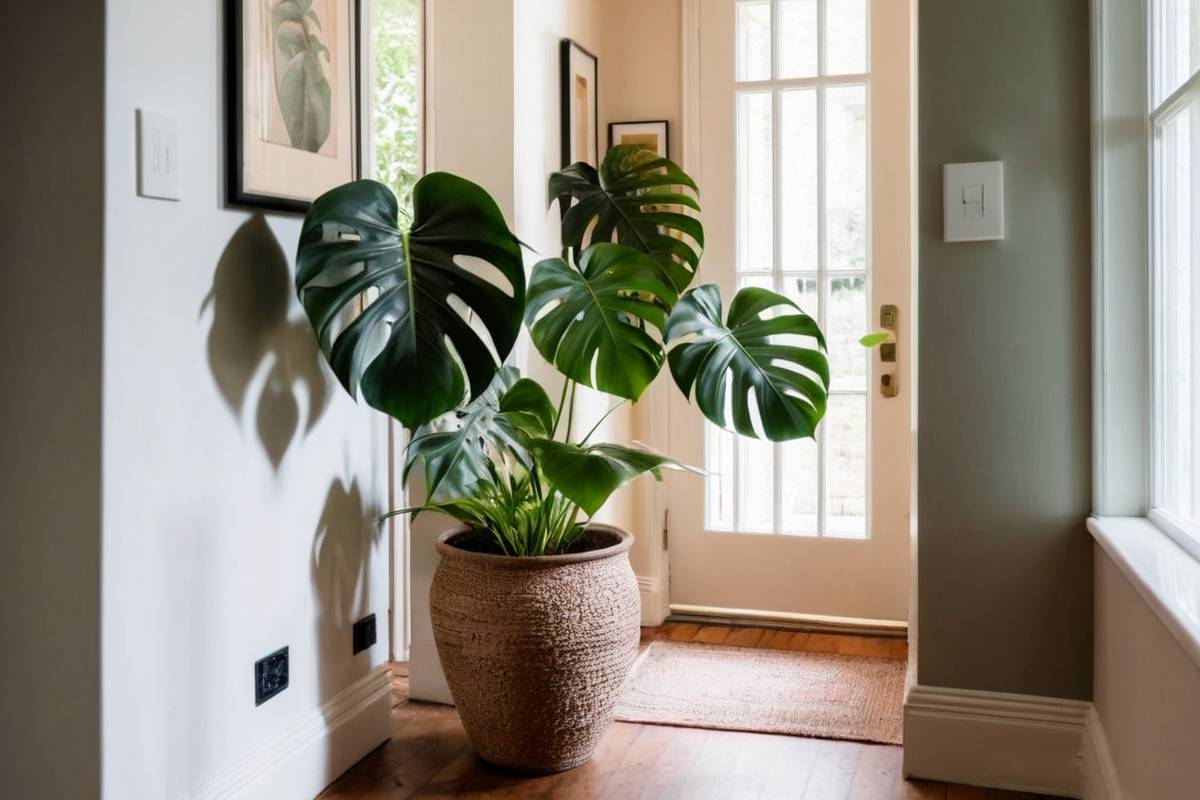

Apart from providing support, proper care is essential for maintaining the health and vitality of your Monstera plant.
Here are some key care tips to keep in mind:
- Watering: Monstera plants prefer moist but well-draining soil. Allow the top inch of soil to dry out before watering again. Overwatering can lead to root rot, while underwatering can cause the leaves to droop. Find a balance and adjust your watering schedule accordingly.
- Lighting: Monstera plants thrive in bright, indirect light. Avoid placing them in direct sunlight, as this can scorch the leaves. If you notice your Monstera’s leaves drooping and turning yellow, it may be a sign of too much sunlight. Move the plant to a slightly shadier spot and observe its response.
- Fertilizing: During the growing season (spring and summer), it’s beneficial to fertilize your Monstera plant regularly. Use a balanced, water-soluble fertilizer and follow the “weakly weekly” approach. This means fertilizing with a diluted solution every time you water your plant.
- Pruning: If your Monstera has become bushy and you feel it’s time for a trim, pruning can be a great option. Not only does it help maintain the plant’s shape and size, but it also encourages new growth. Take a few cuttings and consider starting a second pot if you have the space. This will prevent the plant from becoming root-bound and promote overall health.
Frequently Asked Questions
Is it normal for Monstera leaves to droop?
Yes, some droopiness in Monstera leaves is normal, especially for non-supported plants. However, if accompanied by yellowing, it may indicate an issue.
How can I provide support for my droopy Monstera leaves?
ou can use a moss pole or a wooden plank as support structures. Tie the stems gently, avoiding the petioles or leaves.
How often should I water my Monstera plant?
Allow the top inch of soil to dry out before watering again. Find a balance between overwatering and underwatering.
What lighting conditions are best for Monstera plants?
Monstera plants thrive in bright, indirect light. Avoid direct sunlight, as it can scorch the leaves. Find a spot with filtered or indirect light for optimal growth.
When should I prune my Monstera plant?
Pruning can be done when your Monstera becomes bushy or if you want to maintain its shape. Consider taking cuttings and starting a second pot to prevent root-bound growth.
Droopy Monstera leaves can be normal for non-supported plants, but it’s important to monitor for any signs of distress. Remember to care for your Monstera by watering appropriately, providing adequate lighting and fertilizing during the growing season. By following these guidelines, you can ensure the health and vibrancy of your Monstera plant for years to come.
Happy gardening!

